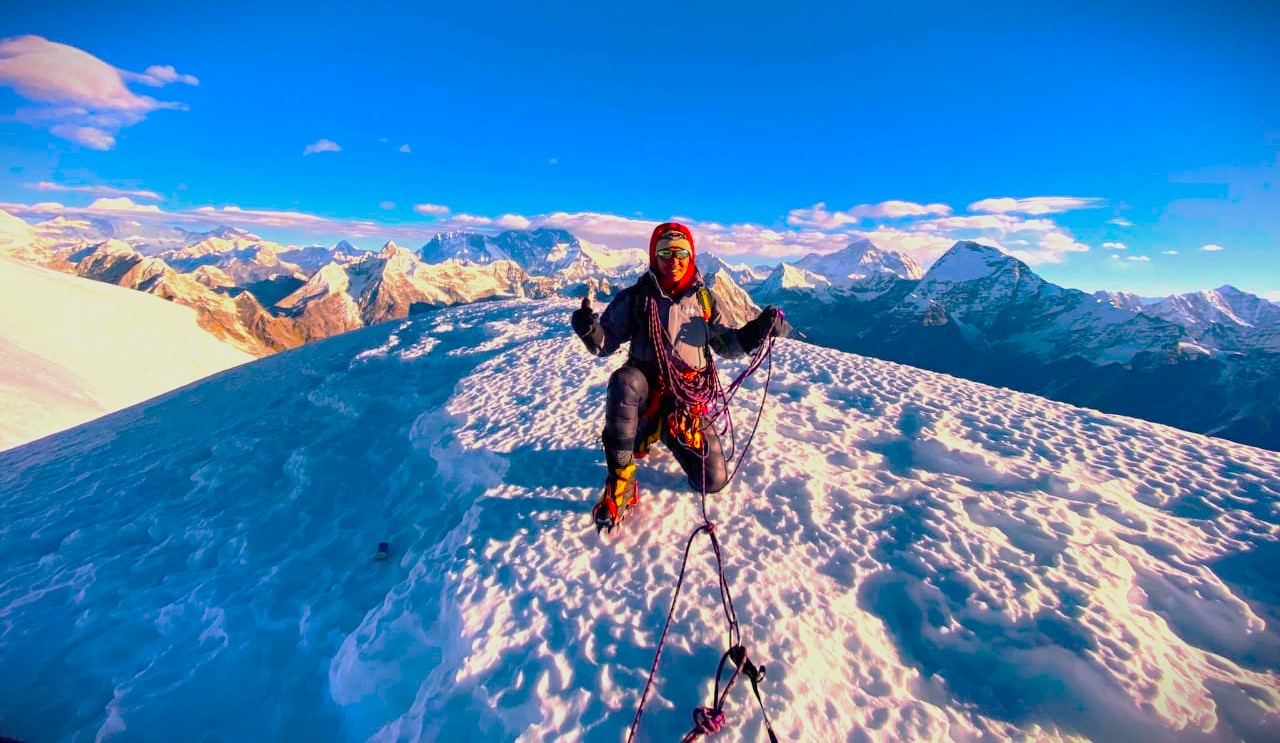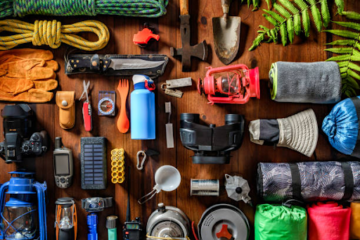Embark on an exhilarating high-altitude adventure in the heart of the Himalayas with our in-depth guide to Mera Peak Climbing. Discover the highlights, detailed itinerary, permit requirements, and insights into the challenges and rewards of scaling this majestic peak. Whether you are a seasoned mountaineer or an aspiring climber, Mera Peak offers a thrilling expedition that promises breathtaking views and a sense of accomplishment. Let’s delve into the details of this iconic Himalayan climb.
Introduction to Mera Peak Climbing
Mera Peak, standing tall at 6,476 meters (21,247 feet), is the highest trekking peak in Nepal and a coveted destination for mountaineers seeking a non-technical yet challenging ascent. Located in the remote Hinku Valley of the Everest region, Mera Peak offers unparalleled views of the Himalayan giants, including Everest, Lhotse, Makalu, and Kanchenjunga. The climb combines glacier trekking, ice climbing, and a rewarding summit experience that captivates adventurers from around the world.
Highlights of Mera Peak Climbing
1. Panoramic Views: Witness breathtaking panoramic views of the world’s highest peaks, including Everest, from the summit of Mera Peak.
2. Remote Wilderness: Traverse through pristine alpine landscapes, remote valleys, and ancient Sherpa villages, immersing in the raw beauty of the Himalayas.
3. Cultural Immersion: Interact with the warm-hearted Sherpa and Rai communities, experiencing their unique culture, traditions, and hospitality.
4. Technical Challenge: Test your mountaineering skills with a non-technical yet demanding climb that includes glacier crossings, ice climbing, and high-altitude challenges.
5. Sense of Achievement: Stand atop the summit of Mera Peak, feeling a deep sense of accomplishment and awe as you gaze at the surrounding Himalayan peaks.
Mera Peak Climbing Itinerary
Day 1: Arrival in Kathmandu
Day 2: Fly to Lukla, trek to Chutanga
Day 3: Trek to Zatrawala Pass
Day 4: Trek to Tuli Kharka
Day 5: Trek to Kothe
Day 6: Trek to Thaknak
Day 7: Acclimatization day in Thaknak
Day 8: Trek to Khare
Day 9: Acclimatization day in Khare
Day 10: Trek to Mera Base Camp
Day 11: Trek to High Camp
Day 12: Summit Day – Mera Peak (6,476m) and descend to Khare
Day 13: Reserve Summit Day
Day 14: Trek to Kothe
Day 15: Trek to Thuli Kharka
Day 16: Trek to Lukla
Day 17: Fly to Kathmandu
Permits and Regulations for Mera Peak Climbing
1. Mera Peak Climbing Permit: Obtain a climbing permit for Mera Peak from the Nepal Mountaineering Association (NMA) and the Department of Tourism. The permit fee varies based on the season and group size.
2. Timberland Entry Permit: Purchase a Sagarmatha National Park Entry Permit for access to the Everest region, which is required for the Mera Peak expedition.
3. Local Regulations: Adhere to local regulations, environmental guidelines, and respect the cultural heritage of the region during the climb.
Difficulty of Mera Peak Climbing
Mera Peak is considered a non-technical climb suitable for climbers with basic mountaineering skills and a good level of physical fitness. The challenges of Mera Peak Climbing include high-altitude trekking, glacier travel, and ice climbing sections. Proper acclimatization, physical preparation, and mental resilience are key to overcoming the difficulties of the climb.
Tips for a Successful Mera Peak Expedition
1. Acclimatize Properly : Allow sufficient time for acclimatization at higher altitudes to prevent altitude sickness and ensure a safe climb.
2. Stay Hydrated and Nourished : Maintain hydration and nutrition levels by drinking plenty of water and consuming high-energy foods to sustain your energy during the climb.
3. Follow Guide’s Instructions: Listen to your experienced guide, follow safety protocols, and communicate any concerns or symptoms promptly.
4. Pack Wisely: Carry essential gear, clothing layers, high-altitude equipment, and personal items required for the climb.
5. Respect the Environment: Practice responsible trekking and climbing ethics by minimizing your impact on the environment and respecting local customs.
Conclusion: Conquer Mera Peak and Beyond
Embarking on the Mera Peak Climbing expedition is a transformative journey that offers a blend of adventure, challenge, and natural beauty in the Himalayas. Whether you are drawn to the thrill of summiting a Himalayan peak or seeking a soul-stirring experience in the mountains, Mera Peak beckons with its majestic allure and promises memories that will last a lifetime. Prepare for an unforgettable mountaineering adventure, push your limits, and stand on the summit of Mera Peak, gazing at the world from a new perspective. The Himalayas await – are you ready to conquer Mera Peak?
Island Peak Climbing: A Classic Himalayan Ascent
Island Peak, also known as Imja Tse, is a popular climbing peak located in the Everest region of Nepal. Standing at 6,189 meters (20,305 feet), Island Peak offers a moderate technical challenge with a steep snow and ice climb to the summit. The climb rewards climbers with breathtaking views of Lhotse, Nuptse, and Ama Dablam.
Lobuche Peak Climbing: A Technical Himalayan Adventure
Lobuche Peak, situated near the Khumbu Glacier in the Everest region, is divided into two main summits: Lobuche East (6,119 meters) and Lobuche West (6,145 meters). Lobuche East is a challenging climb that requires technical skills in rock and ice climbing, offering a thrilling ascent and stunning vistas of the Everest massif.
Key Differences Between Mera Peak, Island Peak, and Lobuche Peak Climbing
1. Elevation: Mera Peak is the highest of the three peaks, followed by Lobuche Peak and Island Peak.
2. Technical Difficulty: Mera Peak is considered non-technical, while Island Peak and Lobuche Peak require moderate to advanced technical skills.
3. Scenery: Each peak offers unique views of the surrounding Himalayan landscape, including Everest, Lhotse, Makalu, and other iconic peaks.
4. Accessibility: Mera Peak is relatively more remote and less crowded compared to Island Peak and Lobuche Peak, providing a wilderness experience.



